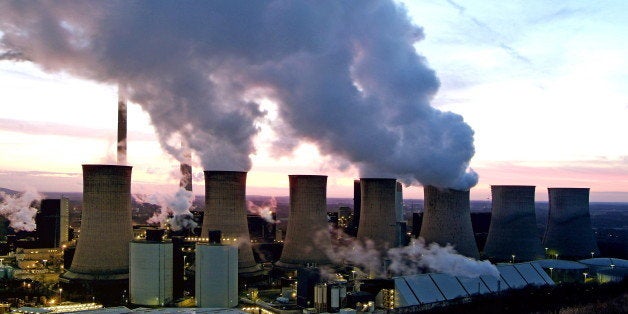
Business understands that the climate is changing, that humans are causing this, and most importantly what we can do to reverse the trend.
We also understand, better than anybody, the scale of the challenge ahead of us. We will, in effect, need to transform entire industries, infrastructure and behaviors globally.
To stay below a trillion tons of carbon, equivalent to staying below a 2-degree increase in temperature according to the latest science, we have to aim for a net zero emissions society by the end of this century. In other words, we should be storing as much carbon as we emit. This requires a fast transition starting now. We need to create and scale up new businesses solutions and infrastructure at a pace humanity has rarely achieved in its history, perhaps only a handful of war-time efforts can come close to the pace of re-tooling and production we expect.
A growing section of business is serious about tackling climate change, yet the support of policy-makers globally will be decisive in achieving the transformation required. All available tools must be deployed in this fight against climate change.
There are several tools available to policy-makers, but a fundamental enabler for business, is to put a price on carbon.
Pricing carbon can be done through a range of instruments such as; emissions trading scheme, regulatory standard or best available technology requirement, and the choice of instrument will depend on national and sectoral circumstances.
A carbon price sets a foundation to unleash the private sector's technology solutions and the innovation potential of some of the world's greatest minds. What a price on carbon does, is to change the rules of the game in business by creating a business case for tackling climate change, where without it there is none.
It makes technologies such as offshore wind, concentrated solar power or carbon capture and storage more competitive, by full-costing the fossil fuel alternative sources of energy. It levels the playing field between clean and emissions-intensive business by internalizing the current externality, namely greenhouse gas emissions. In many cases there will be added co-benefits such as improved air quality and energy independence. Moreover, this progress begets further progress by bringing down the unit costs of technologies as they become more widespread, creating market pull towards the scale we need to match climate change and demand growth.
Not all carbon pricing efforts are created equal. To drive the necessary change, a carbon price should ideally be stable, robust and global in nature. It should also be supported by complementary policies and regulations. Since many investments, especially those related to infrastructure, are long term, business needs stability from one government cycle to the next to have the confidence to invest in low-carbon solutions. A robust carbon price is one which is high enough to incentivize change. As the low-hanging fruit is picked, this price will need to rise over time to incentivize progressively further emissions reductions. Finally, a comparable and consistently applied carbon price across markets and sectors reduces the risk of economic distortions.
As companies internalize the cost of carbon when doing business, it changes investment decisions to align with climate goals. A price will allow companies to provide a strong return to their investors from pursuing strategies and projects that reduce greenhouse gas emissions. As such it will make more sustainable businesses more successful. This mechanism is well known and influential in directing investment. A carbon price harnesses this mechanism and helps make low-carbon business: business-as-usual.
Pricing carbon through legislation acts as a catalyst for the transformation necessary for our society. As we transform, we will create new businesses with innovative products and services resulting in new and rewarding jobs.
At the WBCSD, we represent the companies at the front line of this transformation today. 25 of our member companies have already signed the World Bank Statement: Putting a Price on Carbon. The signatories notably include companies such as BP, CEMEX, E.ON, EDF, Holcim, Royal Dutch Shell and Skanska. We want to create a platform to unite progress towards a new future and we count on the support of policy-makers in tackling the challenges of getting there by creating a positive feedback loop between business and society.
A driver of this feedback loop is a price on carbon.
There is no time to lose.
This post is part of a month-long series produced by The Huffington Post in conjunction with a variety of events being held in September recognizing the threats posed by climate change. Those events include the UN's Climate Summit 2014 (that was held Sept. 23, 2014, at UN headquarters in New York) and Climate Week NYC (Sept. 22-28, 2014, throughout New York City). To see all the posts in the series, read here.